Custom LASIK uses the wavefront technology, originally developed for the military and aerospace industry, and more recently has been adapted for laser vision correction. Rays of light enter the eye as flat sheets known as wavefronts. If the optical properties of the eye are perfect (which is unusual), these wavefronts exit the eye in the same manner as they entered i.e. regular, flat sheets.
When the optical system of the eye has imperfections, the wavefronts exit the eye as irregular distorted sheets of light that look much like the surface of a potato chip. This distortion of the perfect flat wavefront is known as an aberration and its measurement is made possible with an instrument called an aberrometer such as our Carl Zeiss WASCA CRS Master. The aberrometer generates a map of this distorted wavefront, which is known as a wavefront map.
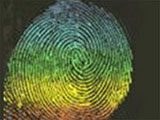 This wavefront map is the fingerprint of your eye’s individual optical defects. Each eye is unique. No two eyes are the same. Your left eye is completely different from your right and there is not another eye in the world that has your individual visual fingerprint! Your eyes’ wavefront map is as individual to you as your own fingerprint or DNA. This wavefront map is digitally transferred to the Carl Zeiss MEL 80 excimer laser, which then re-contours the cornea to correspond to your individual wavefront map, thus correcting your vision to an unprecedented level of accuracy.
This wavefront map is the fingerprint of your eye’s individual optical defects. Each eye is unique. No two eyes are the same. Your left eye is completely different from your right and there is not another eye in the world that has your individual visual fingerprint! Your eyes’ wavefront map is as individual to you as your own fingerprint or DNA. This wavefront map is digitally transferred to the Carl Zeiss MEL 80 excimer laser, which then re-contours the cornea to correspond to your individual wavefront map, thus correcting your vision to an unprecedented level of accuracy.
We now have the ability to measure each eye’s individual wavefront (fingerprint) and customize our laser treatment to precisely correct your particular optical aberration. Standard LASIK as done in the past would be akin to buying a suit or dress,off the rack – one size fits all! Custom LASIK is like having one tailored specifically to your measurements.
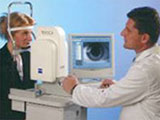
CRS Master Reading & Analysis
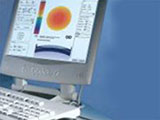
Wavefront map generated

Map Transferred to Laser
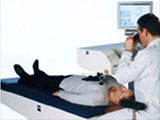
Custom wavefront map is now lasered
How much do you see? The quantitative measure of vision as calculated on the visual charts depends on lower-order aberrations you possess. Lower-order aberrations are also called refractive errors and include myopia, hyperopia and astigmatism. Standard LASIK treats only the lower order aberrations. Sometimes vision after standard LASIK can be as seen as that of the image below.

Map Transferred to Laser
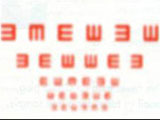
Custom wavefront map is now lasered
How well you see? The qualitative measure of your vision depends on what higher-order aberrations you possess. Higher-order aberrations are irregularities other than refractive errors, and can cause such problems as decreased contrast sensitivity or night vision, glare, shadows and halos. Custom LASIK treats both,lower and higher-order aberrations.
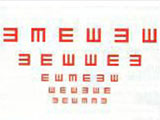
Map Transferred to Laser
Understanding your vision requires taking both, the quantitative and qualitative measures into consideration. This is because it's possible to possess very good visual acuity yet have poor visual quality, and vice versa.
Using our wavefront technology, it is possible for us to first map these aberrations and then, with the help of the Zeiss CRS Master, develop a laser treatment plan to correct them. Wavefront LASIK goes beyond just correcting refractive errors, to actually improving your eye's visual capabilities such that you may see better after surgery,without glasses,than you did with glasses or lenses before the procedure.
Common Side Effects of Standard LASIK
Benefits of Custom LASIK
- Greater possibility of achieving better than 20/20 vision.
- Sharper vision than with standard LASIK.
- Better visual quality and contrast sensitivity than with standard LASIK.
- Reduced possibility of night vision disturbances and glare as compared with standard LASIK.
- Increased possibility to restore best corrected vision if healing problems develop.
Banaji Eyecare is proud to bring Custom LASIK, one of the safest methods of performing LASIK, to you.